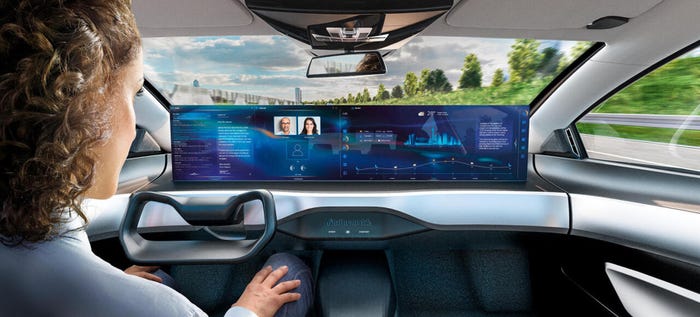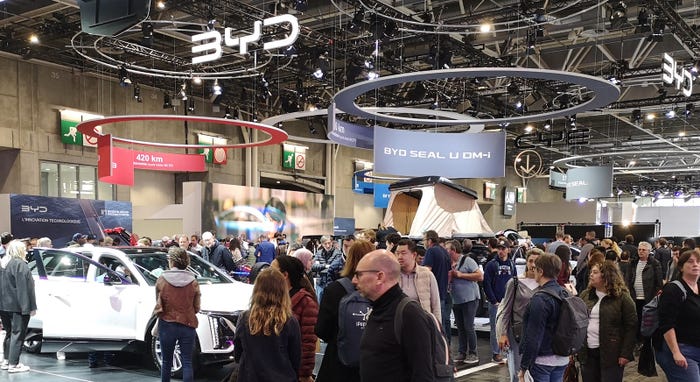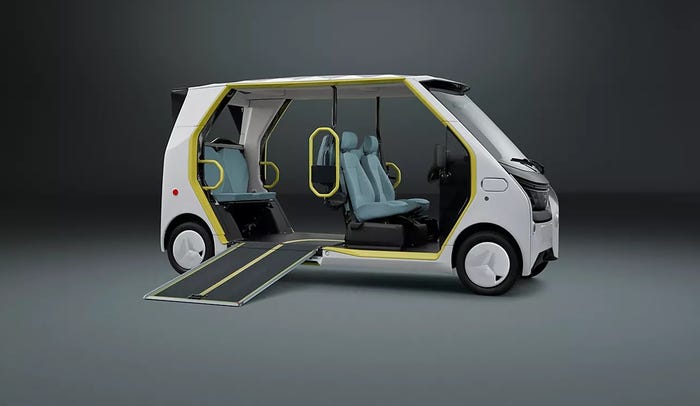Transparent Displays Come Into Focus
Auto industry analysts say the cockpit user experience is more important than horsepower in the EV era, and transparent display technology can be key while also enhancing vehicle safety.
February 6, 2024

Autonomous driving tech took a backseat this year at CES 2024, with cockpit user experience seen as a key differentiator among brands, especially in the EV era. One automotive industry executive even claimed “the user experience (UX) is the new horsepower” – the point is, that safety and practicality are critical considerations for competing in the next decade.
As expected, artificial intelligence (AI) and software-based vehicles generated a lot of buzz at CES, with discussions and demonstrations of their applications in vehicles. However, while the idea of cars becoming “computers on wheels” continued, this year’s presentations were tempered with more realistic and practical expectations, indicating that fully self-driving AI-powered vehicles are still a ways off. While AI can contribute to safety by keeping drivers focused on the road through voice commands, among other applications, it does not address the challenge of presenting increasing amounts of information in a safe and easily consumable format.
The Eyes Have It
Visual stimulation and information presentation remain crucial for drivers and passengers, whether for vehicle operation or infotainment. Display technology has taken center stage as a means to differentiate and enhance the transportation experience. Wide, panoramic displays and multiple screens throughout the vehicle are impressing designers and product planners. However, practicality, cost and safety considerations often take a back seat or are completely overlooked. Some OEM statements, though, have been refreshingly honest about the consequences of such displays and the long-term viability of these user interfaces.
Another notable trend at CES 2024 was the emergence of transparent displays, initially in TV and signage applications but increasingly more applicable to automotive. As the pipe dream of full augmented reality experiences faces challenges related to size, power, cost and complexity, transparent display is emerging as a more practical solution for displaying information on transparent glass and providing significant improvements in both UX and safety.
Practicality and Safety Are Key
Implementing transparent displays in vehicles makes sense for several reasons. Cars have ample glass surfaces, and the amount of information to handle and consume, such as connected cars, vehicle-to-everything (V2X) communication, and advanced driver assistance systems, continues to grow. Additionally, the aesthetic of vehicle interior design is evolving. Apple CEO Tim Cook famously stated that the car windshield was the last untapped screen on the planet, a sentiment shared by all OEMs striving to differentiate their electric vehicle offerings while also improving safety and comfort. The technology being baked into windshields is making windshield replacement much more expensive to vehicle owners and insurance companies, but that seems to be a price that stakeholders are willing to pay for better, safer mobility.
Despite the undeniable benefits, the practical implementation of transparent displays has been a challenge. Early attempts faced issues such as technology incompatibility with curved windshields, low quality, high costs and significant space requirements. These obstacles discouraged OEMs who instead focused on implementing traditional console displays, which were easier to adopt. Automotive requires a unique approach that cannot simply be borrowed from other application areas such as TVs, laptops or clocks. Factors such as glass shape, viewing angles, projection methods, power consumption, size constraints, environmental conditions, cost and lamination requirements all make cracking the automotive nut a difficult task.
Feedback from visitors at CES 2024 confirms the need for a different approach to transparent display head-up displays (HUDs). One promising option is large-format displays based on holographic optical elements (HOEs). HOEs meet the key requirements automotive OEMs are looking for in terms of performance, quality, usability, cost and scalability.
Digital mastering and replication of HOEs is key to making transparent displays a reality in cars, serving as HUDs for drivers, screens for passengers and sources of entertainment and information. This technology will extend beyond passenger vehicles to delivery trucks, industrial vehicles, mass transit and even the emerging category of electric vertical takeoff and landing air transport. Furthermore, beyond the mobility sector, there are opportunities in digital signage, retail kiosks, point-of-sale systems and architectural displays in households and offices.
Thanks to breakthroughs in implementing HOEs and their lamination in glass, the outlook for high-performance, practical HUDs is becoming more promising. However, the true value lies in enhancing safety by keeping operators' eyes on the road instead of being distracted by large screens below. CES 2024 reiterated that while the user experience is paramount, safety remains a top priority.
Andy Travers (pictured, above left) is CEO of Ceres Holographics, a designer and manufacturer of holographic thin films that accelerate the realization of advanced transparent displays in automotive and other applications.
About the Author
You May Also Like

.jpg?width=700&auto=webp&quality=80&disable=upscale)

